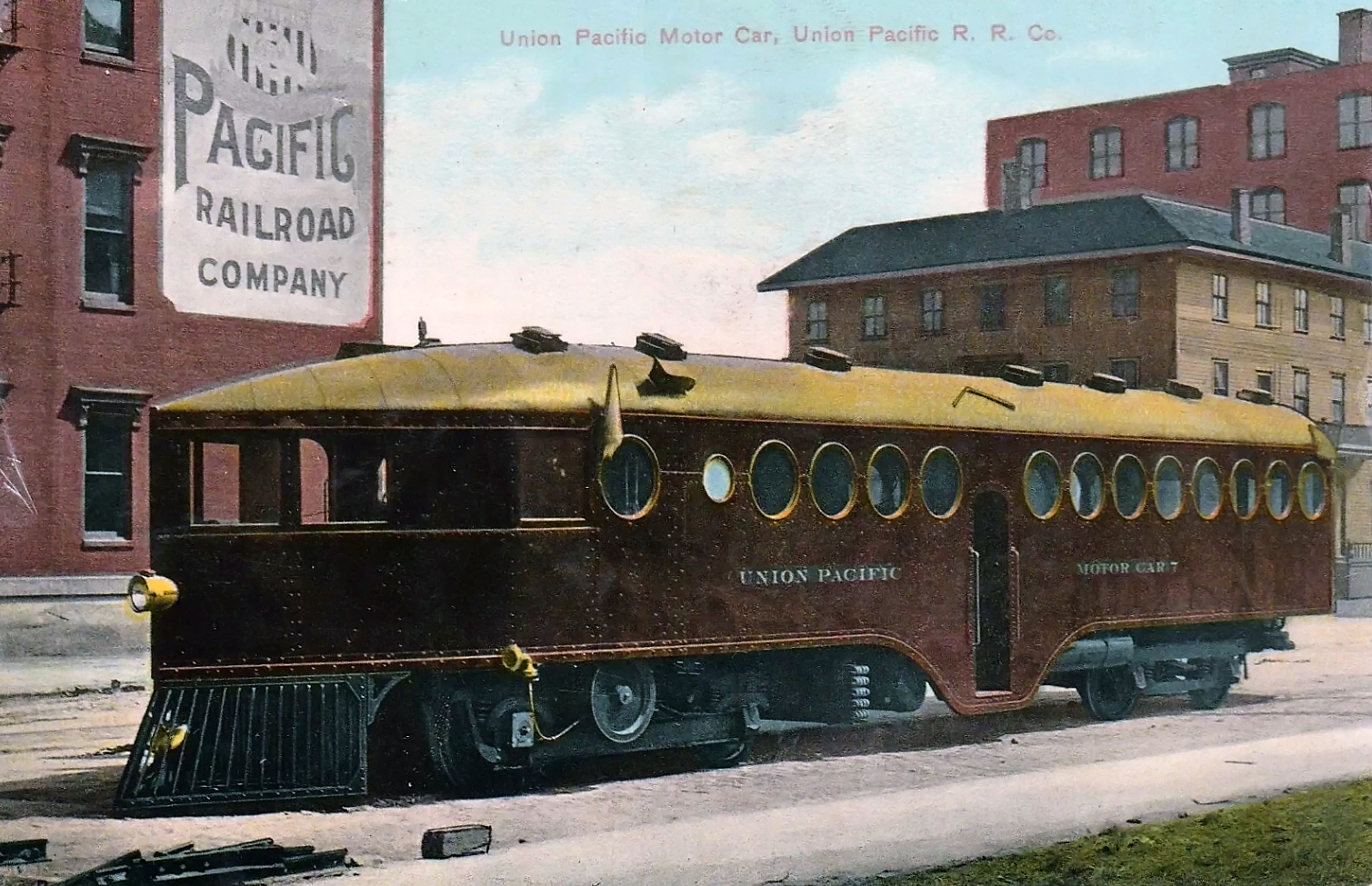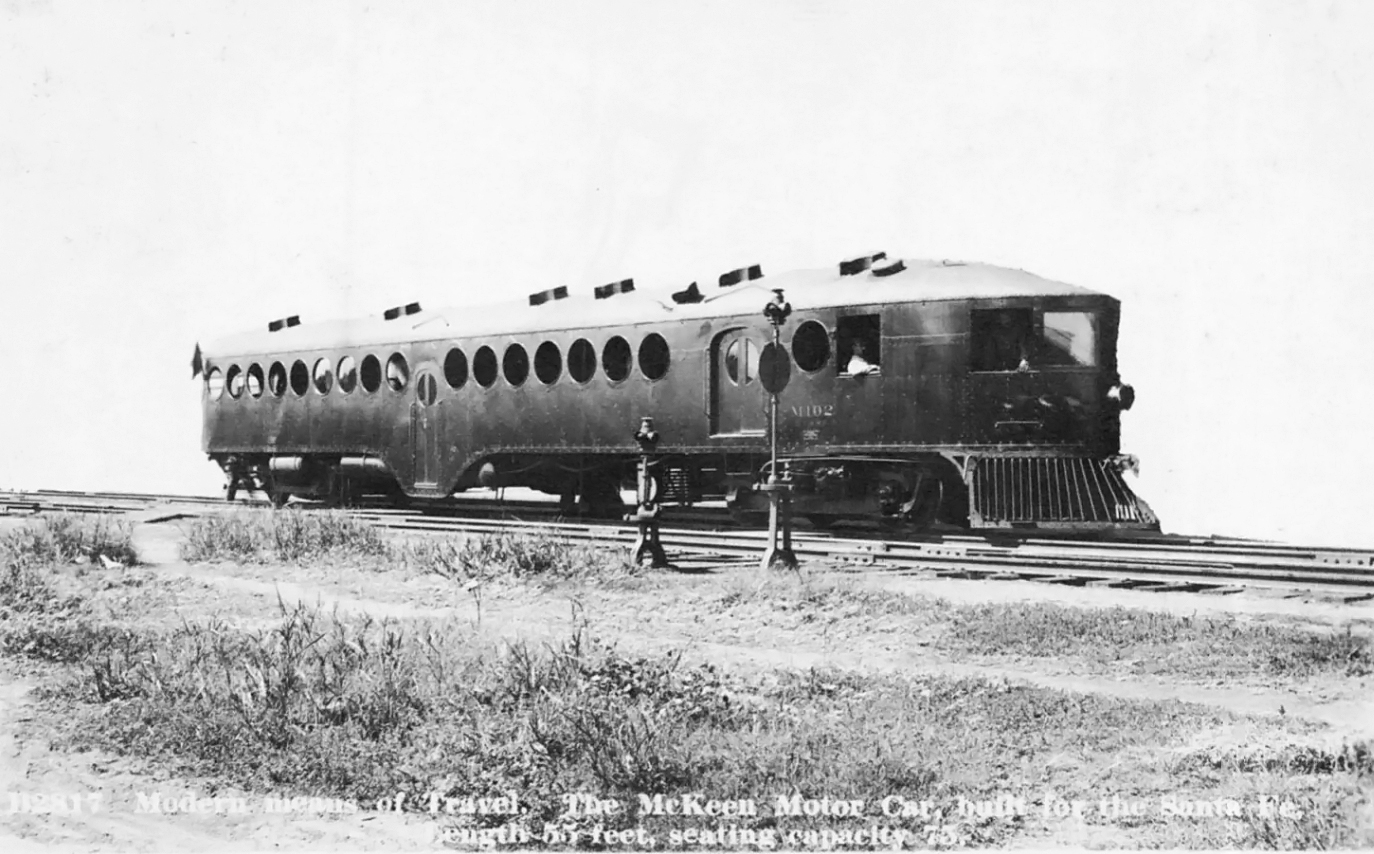McKeen Motor Car Company: Early Rail Travel Innovation
Published: February 3, 2025
By: Adam Burns
The dawn of the 20th century marked a period of transformative change across various sectors, and the transportation industry was not left behind.
Among the numerous innovations, one standout was the McKeen Motor Car Company, which emerged as a significant player in the development of self-propelled railcars.
Established by William McKeen, who served as the Superintendent of Motive Power and Machinery for the Union Pacific Railroad, the company emerged as a subsidiary of Union Pacific.
Initially, McKeen's early railcars were constructed by Union Pacific before he transitioned to leasing workshop space at the Union Pacific's Omaha Shops in Omaha, Nebraska.
Tasked by Union Pacific to devise a more cost-effective method for operating small passenger trains, McKeen developed an innovative design that was advanced for its era. Unfortunately, the technology surrounding internal combustion engines had not yet matured, resulting in McKeen railcars lacking a consistently dependable power source.
The overwhelming majority of these railcars were produced for E. H. Harriman's extensive network of railroads, which included Union Pacific, Southern Pacific, and others.
However, the demise of E. H. Harriman in 1909 resulted in the company losing its primary patron and financial backer, as his successors displayed diminished interest in the McKeen railcars. Throughout its operational period, from 1905 to 1917, the company manufactured a total of 152 railcars.
Inception and Development: The Formation of a Vision
William R. McKeen was the mechanical superintendent of the Union Pacific Railroad when he conceived the idea of a railcar propelled by an internal combustion engine.
This vision was spurred by the need to address specific challenges faced by railroad companies, particularly the high operating costs and inefficiency of steam-powered locomotives on less populated branch lines. McKeen sought to create a more economical option that would encourage rail travel in these areas.
The McKeen Motor Car Company was established in Omaha, Nebraska, a location that provided a strategic advantage due to its proximity to both manufacturing resources and a vast network of railroad lines. McKeen's vision was clear: develop a railcar that could operate independently, eliminate the need for a locomotive, and provide railroads with a cost-effective solution for service on less profitable routes.
Innovative Design: Engineering Marvel or Misstep?
The McKeen railcars were distinctive, often recognized by their unique aerodynamic design characterized by a pointed "wind-splitter" front end, reminiscent of a boat's hull. This design was not merely for aesthetic appeal; it was intended to reduce air resistance and improve speed, making these railcars one of the earliest examples of streamlined vehicles.
The cars typically featured a riveted steel frame, setting them apart from the predominantly wooden railcars of the time. Most models were equipped with large porthole windows, further emphasizing their nautical appearance. They varied in length, from 55 to 70 feet, accommodating up to 75 passengers.
Perhaps the most significant innovation was their power source: a gasoline-powered internal combustion engine. This engine, generally a six-cylinder, delivered power to the axles via a drivetrain similar to those used in automobiles.
Initially, McKeen cars were equipped with engines from Standard Motor Works, located in Jersey City, New Jersey. However, from the production of the eighth unit, designated M8 on the Union Pacific, McKeen transitioned to utilizing engines of their own design.
These engines maintained a straight-6 configuration, with power outputs ranging from 100 horsepower in the earliest models to a maximum of 300 horsepower in later, more powerful iterations.
The cylinders were oriented vertically, and the engines were installed transversely within the car across all McKeen vehicles and locomotives. Most McKeen engines operated on distillate fuel.
The engines - featuring a compressed air starter - were engineered to operate bi-directionally, similar to marine engine systems, as they were devoid of a conventional reverse gear.
To reverse, the engine required shutdown, whereupon the motorman would adjust the camshaft to engage the reverse cam set before restarting the engine in the opposite direction.
A flywheel, positioned on the left side of the leading truck, rotated in alignment with the engine's operating direction regardless of the car's motion. This flywheel played a critical role in maintaining engine momentum and also powered the electric generator responsible for illumination.
The use of such technology in railcars was revolutionary and served to underscore McKeen's commitment to marrying mechanical innovation with practical rail solutions.
Navigating Operational Challenges: Realities of the Rail Line
While the McKeen Motor Car Company was pioneering, the transition from concept to functional reality was fraught with challenges. The railcars, though innovative, faced numerous operational issues.
The gasoline engines, while advanced for their time, were unreliable and required significant maintenance. This unreliability often led to service disruptions and increased operating costs, which contradicted the primary goal of cost-efficiency.
Additionally, the lack of reverse gears in early models posed practical challenges. Operators had to use turntables or wyes to change direction, complicating operations and limiting their practical deployment. Furthermore, the railcars struggled on steep grades due to their relatively low power output compared to steam locomotives.
Despite these challenges, the McKeen Motor Car Company produced nearly 150 railcars over its lifespan of approximately 15 years.
While initially appealing, the practicality of operating the railcars led to dwindling enthusiasm from rail operators. Ultimately, the inability to sustain reliable service, coupled with advancements in diesel technology, contributed to the company's decline.
Pioneering Modern Rail Travel
Though the McKeen Motor Car Company's operational lifespan was brief, its impact on rail travel and transport innovation was significant.
The concept of a self-propelled railcar set the stage for further developments in the industry and showcased the potential of internal combustion engines in transportation, paving the way for the diesel locomotives that would dominate mid-20th-century railroads.
The streamlined design of McKeen railcars inspired future rolling stock designs, emphasizing the importance of aerodynamics in transportation. Later, these considerations became integral to the development of high-speed trains and improved fuel efficiency in passenger vehicles.
A few McKeen railcars have survived into the modern era, preserved as historical artifacts and reminders of an innovative period in railroading history.
Notable examples can be found in museums, such as the Nevada State Railroad Museum in Carson City, where one of the well-preserved cars continues to captivate rail enthusiasts and historians alike.
Legacy of a Pioneering Vision
The story of the McKeen Motor Car Company is one of relentless innovation in the face of adversity. The company's aspirations, symbolized by its unique railcars, captured the ambition of an era striving for progress and efficiency. McKeen's vision of self-propelled railcars anticipated future transportation trends, even if they did not achieve lasting commercial success in their time.
In retrospect, the McKeen Motor Car Company epitomizes the spirit of early 20th-century ingenuity, tackling emerging challenges with bold ideas and laying the groundwork for future advancements in rail transport technology. While the company itself faded into history, its contributions to the development of rail travel remain a testament to the enduring legacy of its innovative approach.
Recent Articles
-
Springfield Union Station (Illinois): An 1898 Masterpiece
Feb 04, 25 12:15 AM
The Springfield Union Station of Illinois is an architectural masterpiece that served the city from 1898-1971. Today it is the Abraham Lincoln Presidential Library and Museum. -
Springfield Union Station: A Tapestry of History and Modernity
Feb 03, 25 11:49 PM
The latest Springfield Union Station opened in 1926 by the Boston & Albany but also served by the Boston & Maine and New Haven. Amtrak still serves the facility today. -
McKeen Motor Car Company: Early Rail Travel Innovation
Feb 03, 25 11:18 PM
The McKeen Motor Car Company was an early builder of early self-propelled railcars with a unique streamlined designed. 152 examples were ultimately built.




